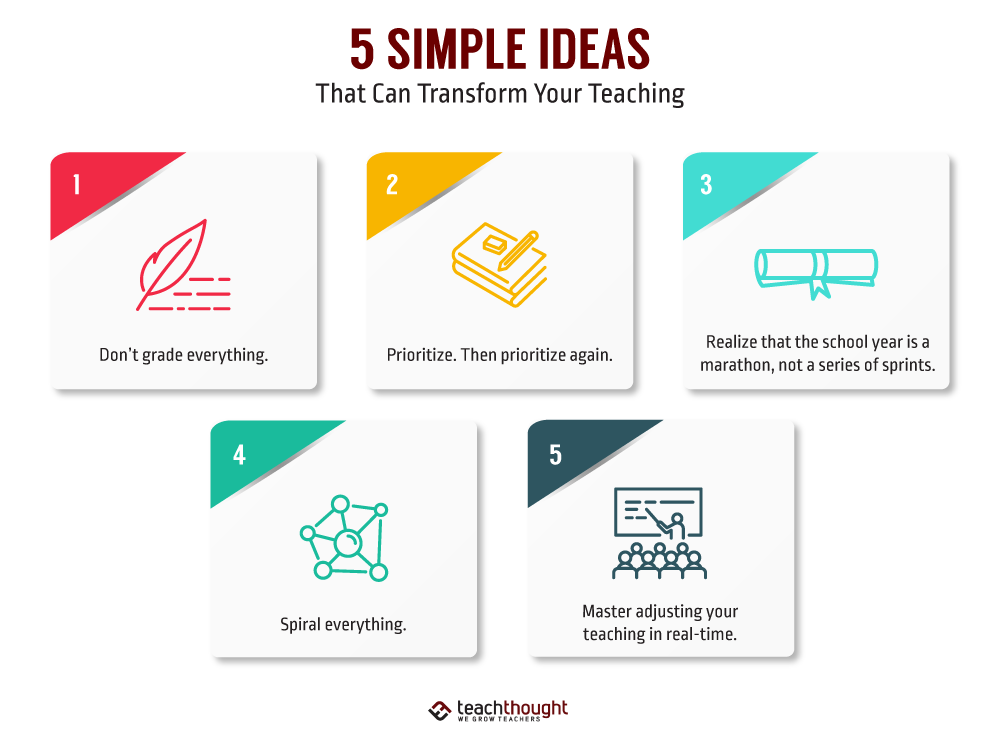
These Simple Ideas Can Transform Your Teaching
by Terry Heick
Teaching is impossibly complex.
Unless you were incredibly wise and prescient, there is no way to be the teacher so many begin their career striving to be. You will simply never be able to fulfill everything that each learner needs, no matter how hard you work, how much you read, and how persistently you collaborate.
That’s not meant to be discouraging, but empowering. Start with what’s important, what is in your reach, and what you can do, and begin your Sisyphean push from there. Below are five simple ideas that can transform your teaching. The post is intentionally brief, meant only to get you thinking and perhaps start a conversation in your PLN.
1. Don’t grade everything.
This will not only save your sanity but protects the students from always fearing failure. The goal of assessment is not a grade, but a snapshot of understanding based on a given assessment format. That’s all.
Grading everything also sets a tone of compliance and measurement, and encourages extrinsic motivation.
2. Prioritize. Then prioritize again.
Embrace that not all ideas—or standards—are equally important. And even if they were, students aren’t going to master every single standard, skill, competency, or topic you hope they will. Be clear about the big ideas in your curriculum, and make sure they show up over and over again via iteration.
3. Realize that the school year is a marathon, not a series of sprints.
You have longer than you think to help students learn. Don’t rush—prioritize and move intentionally forward.
Consider instruction anchored by themes and projects rather than genres or standards, no matter how often you’re advised to be ‘standards-driven.’ You can be standards-driven and still aggregate content by something more compelling—and something more conducive to long-term retention.
4. Spiral everything.
Difficult things take practice. See #3. Constantly spiral the most important, most transferable big ideas in your content. If you’re filling a jar with various size rocks, fit the big rocks in first.
5. Master adjusting your teaching in real-time.
No matter how great your lesson looks on paper, learning cannot happen without engagement. Monitor constantly, and adjust in real-time to respond to how engaged your students are or are not. Also, realize that there is also metacognitive engagement, and this is important because learning is procedural and messy. Curiosity, uncertainty, and confusion are crucial ingredients in learning. You may know this, but make sure your students do as well.
Most teachers can–and often do–adjust their teaching on-the-fly. The key is to master this process, knowing when to adjust what, how to adjust it, and how to know if the adjustments have been effective, etc.
5 Simple Ideas That Can Transform Your Teaching
